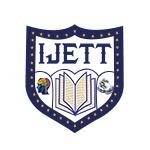Improving the Prediction of Rotten Fruit Using Convolutional Neural Network
How to Cite?
Sumitra Nuanmeesri, Lap Poomhiran, Kunalai Ploydanai, "Improving the Prediction of Rotten Fruit Using Convolutional Neural Network" International Journal of Engineering Trends and Technology, vol. 69, no. 7, pp. 51-55, 2021. Crossref, https://doi.org/10.14445/22315381/IJETT-V69I7P207
Abstract
Separating rotten fruit is a necessary process that helps build trust and credibility before sending fresh products to consumers. This work proposed improving the model for predicting the rotten fruit that applied deep learning technique. The developed models were built using the VGG16 Convolutional Neural Network architecture with 3,000 images of fresh and rotten fruits for training, validating, and testing. The result showed that the developed model from the concatenated images dataset, which applied the RGB, Laplacian o Gaussian, GrabCut algorithm, and Hue Saturation Value with Adaptive Gaussian Thresholding, gave the higher model efficiency than the model that made from the RGB images dataset. This model has a validation accuracy of 89.97% and the testing accuracy of 91.33% for predicting the fresh or rotten red fruit.
Keywords
Concatenated images, Convolutional Neural Network, Rotten fruit
Reference
[1] S. R. Dubey and A. S. Jalal., Application of image processing in fruit and vegetable analysis: A review, Journal of Intelligent Systems, 24(4) (2015) 405–424.
[2] M. Balci, A. A. Altun, and S. Ta?demir., Görüntü leme teknikleri kullanlarak napolyon tipi kirazlarn snflandrlmas, SelçukTeknik Dergisi, 15(3) (2016) 221–237.
[3] I. Sa, Z. Ge, F. Dayoub, B. Upcroft, T. Perez, and C. McCool., DeepFruits: A fruit detection system using deep neural networks, Sensors, 16(8) (2016) 1222.
[4] Y. Yu, K. Zhang, L. Yang, and D. Zhang., Fruit detection for strawberry harvesting robot in non-structural environment based on Mask-RCNN, Computers and Electronics in Agriculture, 163 (2019) 104846.
[5] L. Hou, Q. Wu, Q. Sun, H. Yang, and P. Li., Fruit recognition based on convolution neural network, in Proc. 12th International Conference on Natural Computation, Fuzzy Systems and Knowledge Discovery, (2016) 18–22.
[6] S. H. Wang and Y. Chen., Fruit category classification via an eight-layer convolutional neural network with parametric rectified linear unit and dropout technique, Springer, 79 (2020) 15117– 15133.
[7] B. K. Sava? and Y. Becerikli., Real time driver fatigue detection system based on multi-task CNN, IEEE Access, 8 (2020) 12491– 12498.
[8] I. B. Akinci., The real-time automation system for classifying fruits with image processing, Com. Eng. thesis, Fen Bilimleri Enstitüsü, Karabük Üniversitesi, Turkey, (2017).
[9] M. T. Habib, A. Majumder, A. Z. M. Jakaria, M. Akter, M. S. Uddin, and F. Ahmed., Machine vision based papaya disease recognition, Journal of King Saud University - Computer and Information Sciences, 32(3) (2020) 300–309.
[10] Y. H. S. Kumar and G. Suhas., Identification and classification of fruit diseases, in Santosh K., Hangarge M., Bevilacqua V., Negi A., (Eds) Recent Trends in Image Processing and Pattern Recognition, Communications in Computer and Information Science, 709 (2017) 382–390.
[11] A. Nosseir and S. E. A. Ahmed., Automatic identification and classifications for fruits using k-NN, in Proc. ACM International Conference on Software and Information Engineering, (2018) 62– 67.
[12] F. Ye, X. Lou, and M. Han., Evolving support vector machine using modified fruit fly optimization algorithm and genetic algorithm for binary classification problem, in Proc. 13th International Computer Conference on Wavelet Active Media Technology and Information Processing, (2016) 38–46.
[13] S. Jana, S. Basak, and R. Parekh., Automatic fruit recognition from natural images using color and texture features, in Proc.Devices for Integrated Circuit, (2017) 620–624.
[14] G.E. Sotak, K.L. Boyer., The Laplacian-of-Gaussian kernel: A formal analysis and design procedure for fast, accurate convolution and full-frame output, Computer Vision, Graphics, and Image Processing, 48(2) (1989) 147–189.
[15] B. A. Pearlmutter., Fast exact multiplication by the Hessian, Neural Computation, 6(1) (1993) 147–160.
[16] (2021) OpenCV: Image Gradients. [Online]. Available: https://docs.opencv.org/master/d5/d0f/tutorial_py_gradients.html
[17] G. Rother, V. Kolmogorov, and A. Blake., GrabCut: Interactive foreground extraction using iterated graph cuts, in Proc. ACM SIGGRAPH Papers, (2004) 309–314.
[18] J. W. Long, X. J. Shen, H. Zang, and H. P. Chen., An adaptive thresholding algorithm by background estimation in Gaussian scale space, Zidonghua Xuebao/Acta Automatica Sinica, 40(8) (2014) 1773–1782.
[19] D. N. H. Thanh, U. Erkan, V. B. S. Prasath, V. Kumar, and N. N. Hien., A skin lesion segmentation method for dermoscopic images based on adaptive thresholding with normalization of color models, in Proc. 6th International Conference on Electrical and Electronics Engineering, (2019) 116–120.
[20] K. Simonyan and A. Zisserman., Very deep convolutional networks for large-scale image recognition, arXiv preprint, arXiv:1409.1556, (2015).
[21] S. Nuanmeesri., Development of community tourism enhancement in emerging cities using gamification and adaptive tourism recommendation, Journal of King Saud University - Computer and Information Sciences, (in press), (2021).
[22] S. Nuanmeesri and W. Sriurai.,Thai water buffalo disease analysis with the application of feature selection technique and Multi-Layer Perceptron Neural Network, Engineering, Technology & Applied Science Research, 11(2) (2021) 6907–6911.
[23] S. Nuanmeesri, W. Sriurai, and N. Lamsamut., Stroke patients classification using resampling techniques and decision tree learning, International Journal of Engineering Trends and Technology, 69(6) (2021) 115–120.
[24] K. Janocha and W. M. Czarnecki., On loss functions for deep neural networks in classification, Schedae Informaticae, 25 (2016) 49–59.
[25] Z. Zhang and M. R. Sabuncu., Generalized cross entropy loss for training deep neural networks with noisy labels, in Proc. the 32nd Conference on Neural Information Processing Systems, (2018).
[26] Q. Zhu, Z. He, T. Zhang, and W. Cui., Improving classification performance of softmax loss function based on scalable batch normalization, Applied Sciences, 10(8) (2020) 29–50.



